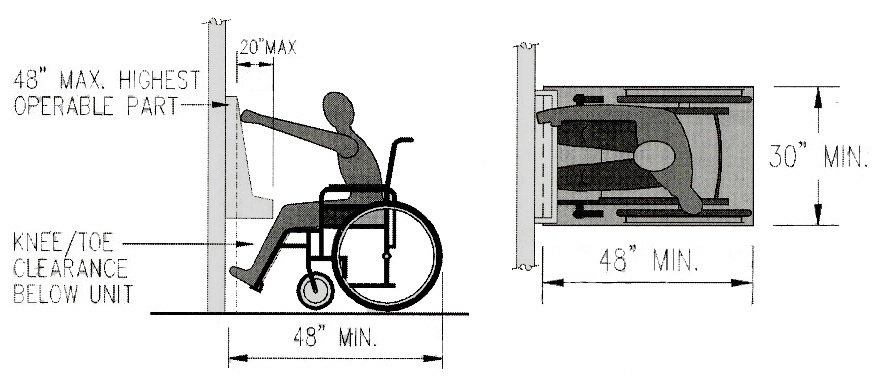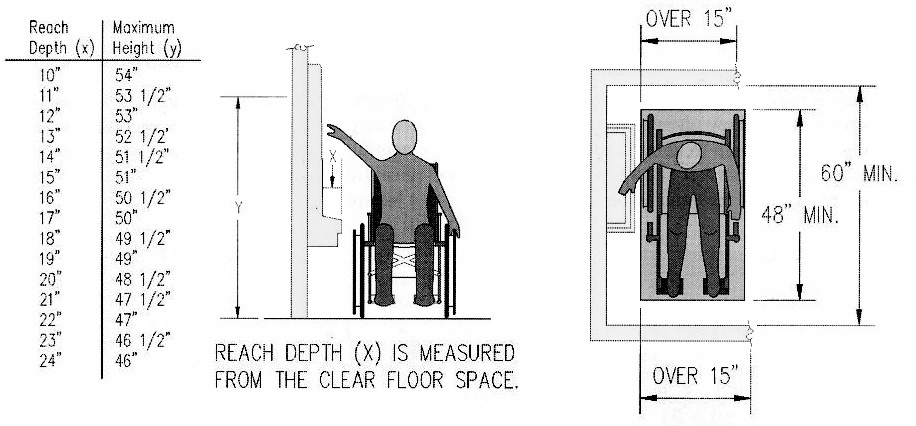Automated Teller Machines [4.34]
Scoping [4.1.3(20)]
Where automated teller machines (ATMs) are provided, ADAAG requires access to at least one ATM in each location. The requirements of this section also apply to automatic fare vending and payment systems in transit stations. Specifications in 4.34.2 and 4.34.3 were modified in June 1993 to allow either a forward or side approach and to provide further guidance on side reach heights.
Clear Floor Space [4.34.2] and Reach Ranges [4.34.3]
Either a forward approach or a parallel approach to the ATM must be provided. Maximum reach heights to controls are based on the approach provided. The reach height applies to all controls and elements available for customer activation. (If different controls can perform the same function in a substantially equivalent manner, then only one is required to be within the required reach).
Forward Approach
A maximum height of 48 inches is required for a forward reach. Clear floor space must be provided to the face of the unit since the seated forward reach does not extend much beyond the toes. Toe/knee clearance below the unit makes this reach easier by allowing a closer approach.

Side Approach
Where space is provided for a side approach, controls can be mounted at the heights allowed for side reaches. In June 1993, additional specifications were provided for the maximum height based on the reach depth. Where the approach space is obstructed on both sides more than 15 inches, additional space for maneuvering is required. Recommendation: The clear floor space should be centered on the ATM unit.

Controls [4.34.4]
Controls for user activation must:
-
be automatic or operable with one hand
-
operate without tight grasping, pinching, or twisting of the wrist
-
require no more than 5 lb force to activate
Equipment for Persons with Vision Impairments [4.34.5]
Access for people with vision impairments was specified as a performance standard so that manufacturers could examine and develop solutions, including those that take advantage of new technologies. Braille instructions and control labels are commonly provided (Braille output is not required). Audible devices and handsets can also provide access while maintaining privacy. Even touch-screens with appropriate software and hardware can be made accessible to persons who are blind.

User Comments/Questions
Add Comment/Question